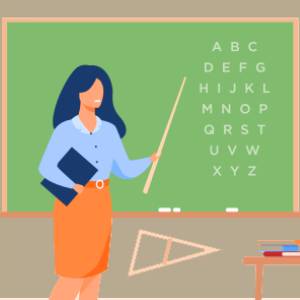The Team
Walnut School has a very large system at work in the background with three different groups working on it simultaneously – the teachers, the research and development teams and the software teams. And to add to the complexity, each one is working from their respective homes! Luckily, our school has a strong back office and a good learning system partner with systematic curricular material and strong technology knowledge.

The Philosophy
However, even with all the expertise that we have, managing the online experience has been and continues to be a humongous task! We aren’t just doing a zoom video call and calling it an e-school. No, no! That’s not how we do things at Walnut. We have a very thorough and detailed plan with practical difficulties and internet bandwidth constraints considered to make it as less painful as possible. We are probably the only school with such an integrated approach to the e-school.

The Offline-Online Combination
Walnut e-school works in an online-offline combination. Students can choose to attend the live lectures, but in case they can’t, they still have access to all the material so they can do it as per their convenience, as long as it’s submitted before the deadline.
The online part is the live interaction. That will happen according to a fixed timetable.
Offline means that the material and instructions will still be sent electronically, but you can plan when to do it. It is not a “live” thing where you have to be online at a certain time.
Why are we doing it like this? Because we know that most students do not have their own desktops or laptops at home, they have to share their computer with the family. The parents may need it when they are working from home. Keeping this in mind, it is better to let the students have flexibility in the schedule. That keeps the timetables at home easier to manage.
The Different Components
Here are the different components of the curricular material and the learning system in the e-school mode

Subject wise classrooms
- Depending on what subject they are working on, the students will join the classroom for that subject.
- This is where they will receive instructions in different formats (audio, video, photo, documents etc.) and where they will post their assignments and receive feedback from the teachers.
- This is also where they can interact with the teacher for that subject and the rest of the students in their standard.
- Each core subject will have a separate classroom and there will be additional classrooms for activities and sports and a separate one for announcements as well.
Offline Teaching
- This is a simulation of a whole period with all the teaching and instructions.
- If you want to do the work of the period ahead of time or if you are unable to attend the live class, you can use this and still get the whole teaching experience.

Blackboard Notes

- There is a version of the presentation of the learning without the teachers’ commentary.
- This can be used for quick reference while doing assignments so that the student doesn’t have to keep going through the video lecture.
Worksheet, which comes in the physical form
The worksheet is shared with the students and the homework and classwork expectations from that worksheet shared.

HW and its submission

- Teachers will discuss and allot the CW for the day in their lecture.
- Students will receive HW assignments on Google Classroom, that they have to solve and submit through the same portal for teachers’ feedback.
- Normally in school, the students have a core period for 35 min and they are expected to do some homework as well. The same expectations continue in this format as well!
Interaction in the classroom (online part)
- This is the live teaching that will happen on the link given at the time given.
- The access to this is only through the Walnut email ID. Personal logins will not work.

Interaction in the classroom (offline part)

- The submission of CW and HW will be done online in that subject’s classroom. The teacher will check the work and post the feedback in the student’s personal folder in the classroom.
- In the classroom the students can also ask doubts and take part in discussions.
- All this interaction is going to be offline. So students can plan (according to their convenience) when they want to do their work. They just have to make sure that the deadline is followed. This will help parents plan when the devices will need to be used!
Walmiki Quiz
- There are tons of quizzes at the end of each lesson which help in revision and practice.
- There is access to lectures on all the lessons in the curriculum to learn or revise.
- Some part of the formative assessment and summative assessments also happens here.

Recorded lectures

- After a few days, the recorded lectures will be put in a folder that the students will be able to access, if they wish to go through it again.